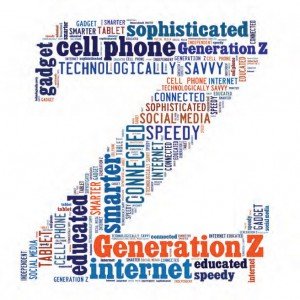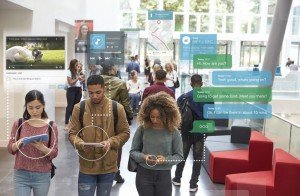It was once understood that traditional students, the high school grads who jumped right into their postsecondary degree at an established brick-and-mortar school, comprised the majority of college students. The nontraditional, typically older students who were juggling classes, work obligations, and families, were on the outer fringes of the paradigm.
As of the last decade, however, the whole “traditional/nontraditional”
structure has been turned on its head.
Now, these categories are becoming blurred, to the point where they are practically extinct. The incoming students who would have been considered “traditional” are exhibiting more demographic diversity and much more focused, career-centric goals – far removed from the mere desire for the classic college experience. Additionally, there is a rising number of “nontraditional” students who can no longer be considered an afterthought in the university model. As these shifts occur, it becomes less helpful to think of students in categories like “traditional” and “nontraditional.” Rather, it’s time to look at student demographics in terms of their motivations and generational traits – not their age brackets.
Changing this mindset so drastically presents unusual challenges both to enrollment and student retention. But to truly understand these new pain points and how schools can adapt, we first need to know what the new demographics look like.
The Wider Student Scope
Per the National Center for Education Statistics, as of 2014, fully 40% of college students were over the age of 25. The longheld idea that the vast majority of students are fresh-faced high school grads is becoming an out-of-date standard. Granted, this statistic is looking at college students as a whole, both graduate and undergrad, but it still displays the fact that adult (or “nontraditional”) learners are a significant piece of the puzzle.
And according to The Washington Post, women make up the majority of college students, at a whopping 57%. That’s over half of all college students – online and brick-and-mortar, undergrad and graduate – who are female. An ever-widening gender gap reveals that men are not only less likely to enroll than women, but also less likely to stay in a program once they’ve started. This presents challenges as to how to capture this male demographic and retain them.
Aside from these broad differences, we’re also seeing the fade out of one generation and the entrance of the next – with its own unique set of preferences, influences, and motivations.
Gen Z: The Up-and-Comers


Though it’s true that there is an increasing number of adult learners, there are still plenty of high school grads out there with their sights set on a bachelor’s degree. But we’re not dealing with Millennials anymore – the incoming graduates are now part of Gen Z, and with that comes major differences from the Millennials we’ve become so accustomed to.
Gen Zers (also known as Plurals or Post-Millennials), are the first technologically indigenous generation. Millennials are incredibly tech-savvy, but Zers have never known a time before cell phones and ubiquitous Internet access. As such, they expect to see high-speed, intuitive technology integrated into their classroom education. Fully traditional, lecture-driven classroom models may not be appealing to the incoming student for this reason alone.
Gen Zers also communicate much differently than their older brethren. Social media is incredibly influential in their decision making, so how you brand yourself online and the personalization you put behind each post creates a meaningful impact on your Gen Z audience. One important note, however, is that while Post-Mills want to interact on social media, they don’t necessarily want to receive personal communication in a public forum. They prefer to see an email or a private message, to keep that one-on-one connection.
In terms of social channels, Facebook is still on top, but Gen Zers use it more to keep in touch with old friends than to communicate with current friends. Outlets like Instagram and Snapchat are where teens converse and share with their peers, but again, not necessarily with schools or businesses. This means that such platforms should be used by schools to share posts that invite engagement – not demand it.
While we’re on the topic of social, there’s another significant influence in Gen Z’s decision-making: their peers. Post-Millennials are much more swayed by the advice and attitudes of their peers than by that of their own parents. Thus, a tactical shift is in order for enrollment marketers who tend to direct their efforts to both student and parent.
Yet another shaping facet of the burgeoning Generation Z is their upbringing during the Great Recession. They have a very economical, practical outlook, and as a result their educational choices are focused on value. They’re willing to incur the cost of an education, but only if that cost will yield appropriate results – which, to them, means a career that is both fulfilling and financially stable. They need to be assured that their investment will pay off in the long run.
Millennials: The Grads


The Gen Z crowd has a lot in common with their Millennial counterparts, but there are still some unique factors in play that should be considered.
The Millennial generation is getting a little older. Though some late-bloomers are still plugging away at an undergrad degree (possibly online, working around their jobs or families), most of the learners in this category are graduate students. In either case, there seems to be one common thread throughout the Millennial mindset, and that is the desire for flexibility.
Millennials value a solid work-school-life balance, so many of them look for alternative schooling routes to fit classes in around an already busy schedule. Online schools are booming for this very reason, and traditional schools that offer online, hybrid or accelerated courses are often a great fit for the Millennial learner.
Similar to the up-and-coming Gen Z, Millennials are also technologically driven. They remember the birth of Internet technology and a host of other tech advances, and they’ve organically learned to adapt with such changes. They are heavily influenced by the online realm – particularly social media.
One important aspect of this, however, is that Millennials don’t just search for information to help them make a decision; they look for stories. Millennials want to feel like they’re part of something bigger, possibly because they remember a time of more personal connection than just social media presence. They seek personalized messages and well-crafted stories that make them want to join your mission. This is why inbound marketing (especially online content) is so critical in reaching this generation.
Another aspect of personalized experience is the tactile characteristic, which makes direct mail an appealing avenue to reach Millennials and, surprisingly enough, their younger Gen Z compatriots, according to reports by Mintel and InfoTrends. Although snail mail is being abandoned by many in favor of digital, statistics show that it’s an incisive way to reach younger audiences. Post-Mills and Millennials alike value printed media for the sensory quality, so a visually engaging piece of mail can bridge a gap in a way that even email sometimes can’t.
Yet another similarity to Gen Z is Millennials’ view of education as a means to a career. Millennials also grew up in the thick of the Great Recession, and this led many to embrace education not for personal fulfillment, but for the sole purpose of landing a job. This has paved the way for Millennials to pursue advanced degrees, as they see a master’s degree as a ticket into a higherpaying job. This is only reinforced by the rising demand in the workforce for employees that hold specialized master’s degrees.
The Generational Impact on Higher Ed Enrollment
Millennials are the first generation to grow up with
the Internet, which means keeping them engaged
can be challenging but, on the other hand,
invigorating. The key to recruiting Millennials is to
make sure information and resources that relate to
your institution are easily accessible and can be
found in multiple places.
The University of Chicago – Graham School
These demographics, motives and mindsets are what make an institutional brand resonate with a student. These factors will be the force behind whether a potential student stops to engage or keeps on scrolling. Social and demographic issues need to play a critical role in higher education recruitment strategies, both in day-to-day practicalities and in the broader picture.
Practical Applications
The common trait among these demographics is the need for personalized experiences. Every step of a student’s journey should be rife with relevant and engaging information that conveys to the student: You belong here.
Even in the earliest stages of recruitment, students should be targeted based on background analytics work. Data mining and predictive modeling help you form a solid idea of where your best candidates are, based upon prospective student interests and past student successes.
Creating targeted ads that center not only on demographics but also on particular areas of interest and where a student is in their consideration process allows you to cut right through to their immediate situation. This can pave the way for further communication, like personalized, automated messages or the eventual follow-up phone call. Streamlining recruitment in such a fashion not only helps personalize the experience for the student, but also eliminates wasted resources on the university’s end.
This principle applies to retention as well. Keeping tabs on student performance and class enrollments can let the school know how likely a student is to succeed, and what kind of assistance they need in order to stay on track. Students need their personalized experience to continue throughout their schooling, lest they feel adrift and lose their motivation. Automated messages that clue students in on their progress or provide help are just one way a school can remind their students they are seen and they matter.
Broadening Focus


These nitty-gritty details fall flat if an institution’s overarching emphases are not shifting with the demographics. Schools should be ready to turn their overall focus to points of need for the new “traditional” (read, “not-in-any-way-traditional”) student.
The emphases for schools should align with those of its students, and in the case of the upcoming generations, that means offering value, variety and flexibility.
- Value: Some schools are now offering more scholarships or streamlined certificate programs to allow students to achieve certifications more quickly. Others stress that their degrees are investments that will pay off by providing high-wage jobs. However your institution chooses to approach this, it’s clear that Gen Zers and Millennials are looking at the bottom line, and this needs to be a priority for schools.
- Variety: For the potential master’s student, the name of the game is specialization. Specialized degrees offer a faster route through to a career, with more opportunities postgraduation. Now is the time for schools to diversify their program portfolio by focusing on burgeoning fields of study.
- Flexibility: A school’s class course schedule can be the deciding factor for many students. Strictly brick-and-mortar campuses are already having a difficult time competing with online institutions where students can learn entirely at their own pace. Traditional schools who want to stay ahead of the curve should branch out into more online, hybrid or accelerated avenues to offer more options to potential students.
The old adage “grow or die” has never been more applicable for schools than it is right now. As the idea of what constitutes a “traditional” student rapidly becomes broader, schools need to be ready to change their game according to these shifting characteristics. Incorporating personalized experiences and more schooling options creates an atmosphere that is more engaging to this unique student landscape, and in turn, schools that conform to these new standards will set themselves apart as distinctive and coveted institutions.

